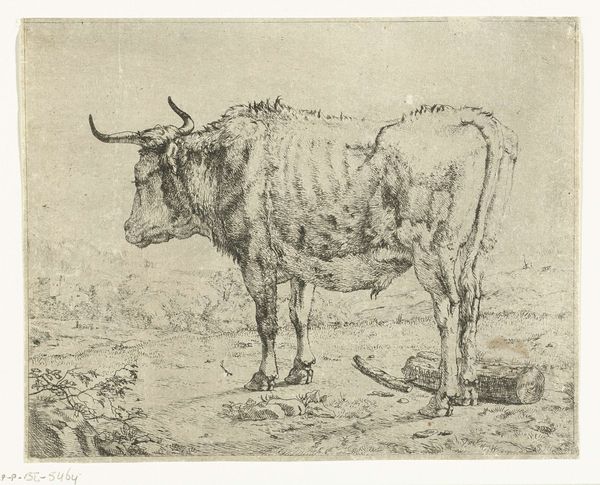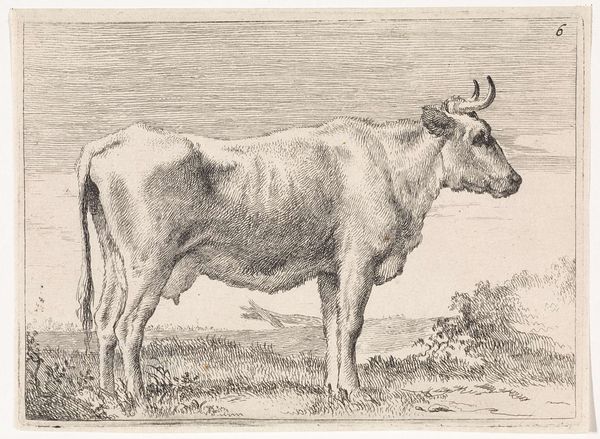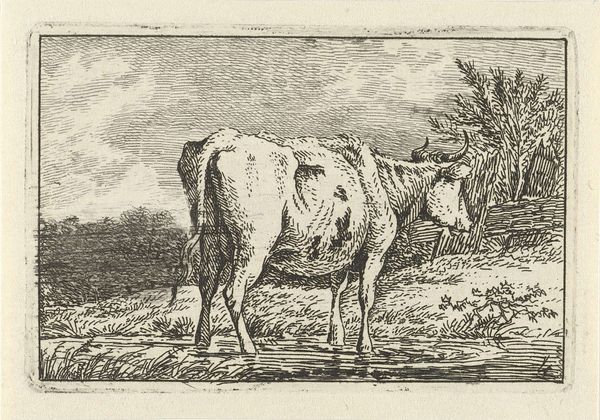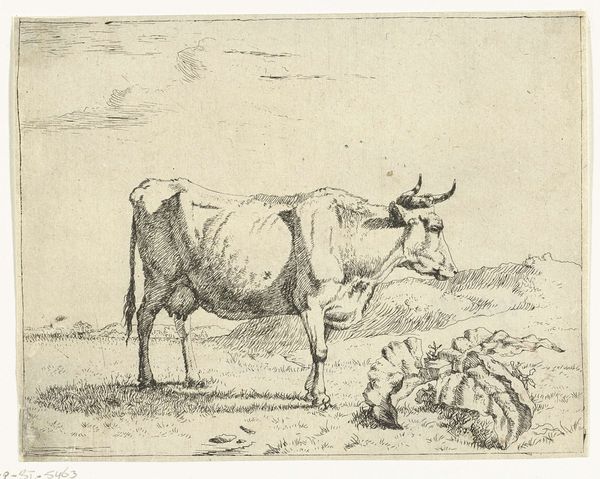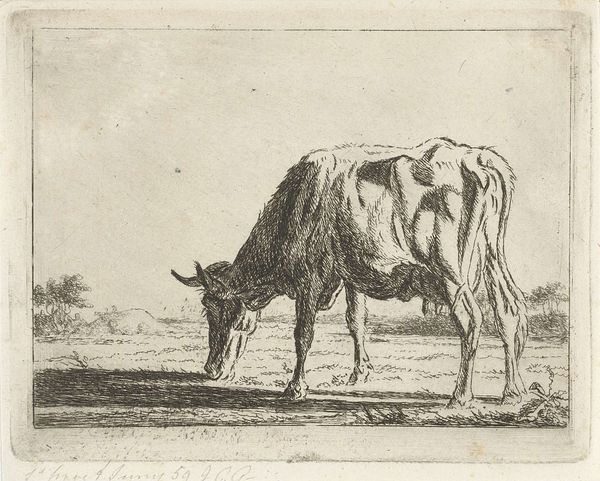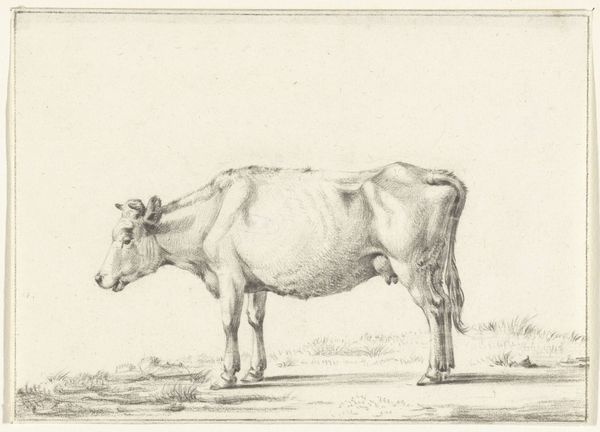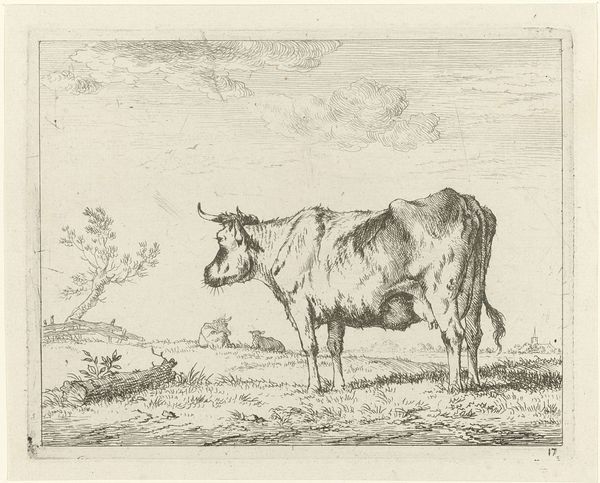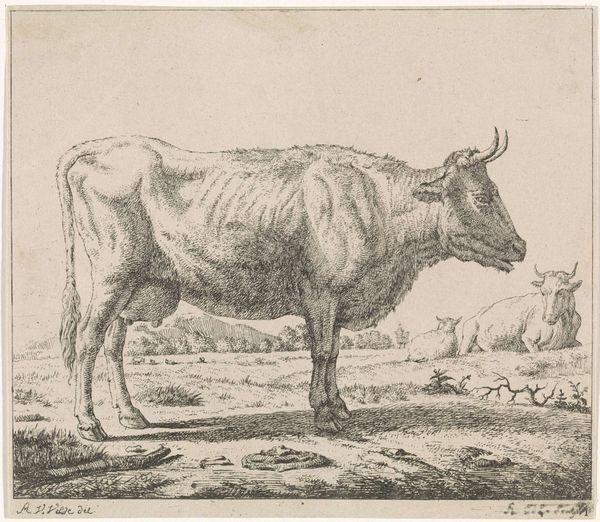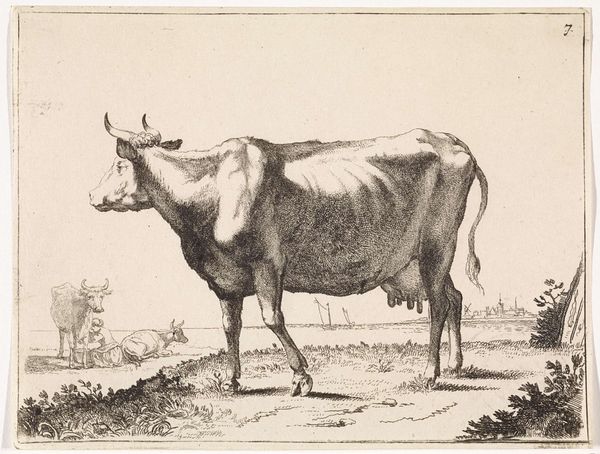
print, etching
#
animal
# print
#
etching
#
landscape
#
genre-painting
#
realism
Dimensions: height 118 mm, width 150 mm
Copyright: Rijks Museum: Open Domain
Editor: We’re looking at “Koe, staand bij een hek,” or "Cow, standing by a fence" by Jacobus Cornelis Gaal, an etching from around 1850. It's surprisingly detailed for a print; the texture of the cow's fur and the roughness of the fence really stand out. What do you find most compelling about this seemingly simple scene? Curator: What strikes me is how this artwork engages with the evolving role of rural imagery in Dutch society during the mid-19th century. We see a movement towards Realism and a focus on the everyday life, but this wasn’t always about simple representation. Think about it: How did increasing urbanization shape the idealized depictions of rural life? Editor: That's interesting! I hadn’t thought about the urban perspective influencing rural scenes. Is the cow possibly more symbolic then? Curator: Precisely! While seemingly a simple genre scene, it speaks volumes about the perceived purity and authenticity of rural life versus the growing industrialization. The museum's role, by displaying such images, is to both preserve and, in a sense, legitimize this view of Dutch identity, especially in contrast to a rapidly changing urban landscape. What elements in the etching technique contribute to this sentiment, in your opinion? Editor: Perhaps the starkness of the etching, with its sharp contrasts, lends a sense of "truthfulness" to the scene. Almost documentary-like? Curator: Yes, precisely! The print medium itself, being reproducible, democratizes this idyllic imagery. Think of it as mass media of its time. And by implication, it puts the art in conversation with wider cultural and political questions. Editor: That completely shifts my understanding. I initially saw a simple cow in a field, but it reflects larger social forces at play. Curator: Exactly! Hopefully, now when people view the art, they will also reflect on the art's role in creating meaning.
Comments
No comments
Be the first to comment and join the conversation on the ultimate creative platform.

